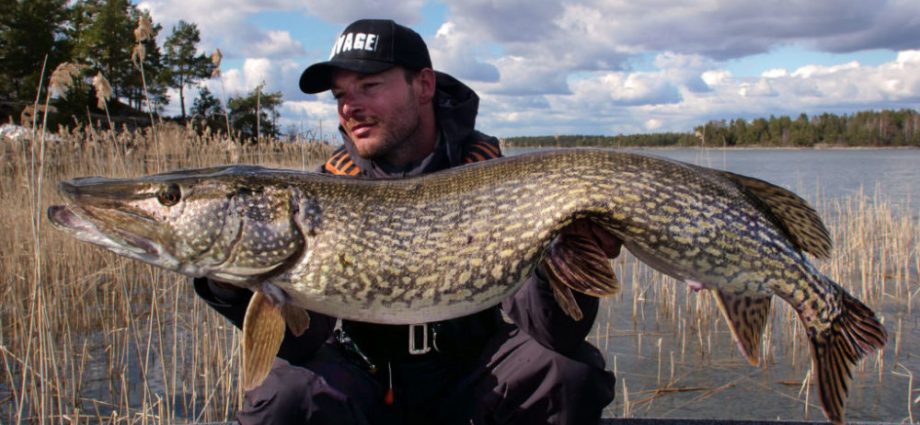Contents
The common pike is a fish of the pike family. It is found in the fresh waters of Eurasia and North America. It lives in coastal areas and water thickets. One of the favorite trophies among anglers. There are many legends about huge pikes that are found in our reservoirs. But are they true? Let’s find out what size the pike really is and how much the largest representative of the “toothy” caught weighs.
How big does pike grow?
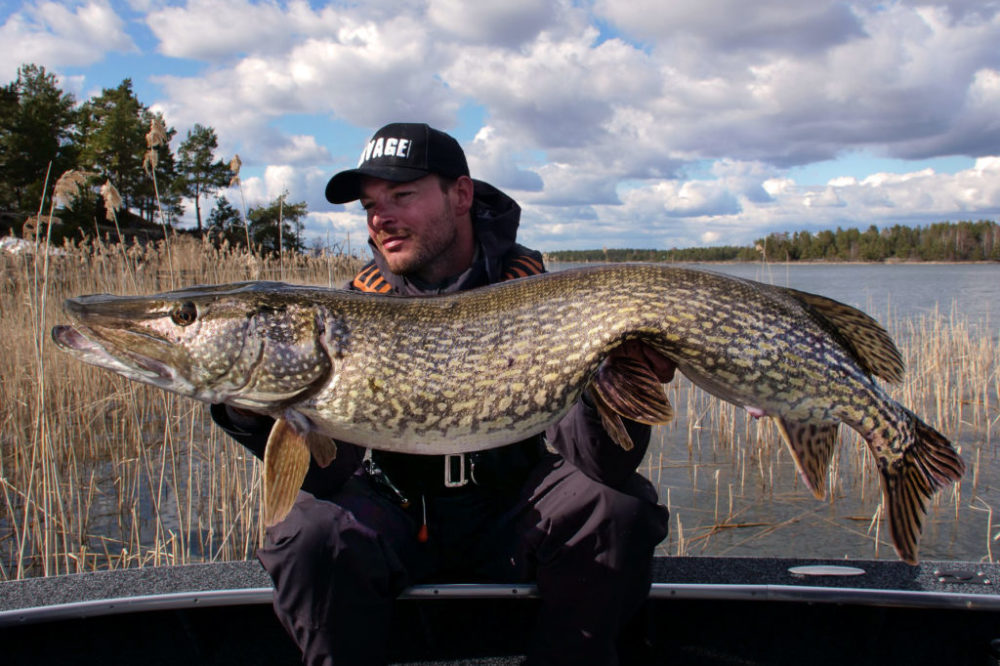
Scientists believe that the pike lives no more than 30-33 years. It is worth noting that very few of them survive to such an advanced age. Their growth continues throughout life. However, its intensity differs greatly from year to year. They grow most strongly in spring, in summer this process slows down, and in autumn it starts again, although not as fast as in spring. In the southern regions they grow more, in the northern – less.
These fish can reach enormous sizes. A large pike can be about 2 meters long and weigh about 30-35 kilograms.
Help: There are 5 types of pike. Two of them live in the fresh waters of Eurasia, this is an ordinary pike (northern) and Amur. Three more live in the waters of America, these are the masking, striped and red-finned pike.
According to Sabaneev’s observations, an adult pike adds about 2 cm in length per year. These indicators are only conditional and it all depends on many factors.
Actual numbers vary depending on habitat and other nuances:
- the size of the water area;
- abundance of forage base;
- the number of this predator;
- oxygen balance;
- chemical composition of water.
Experienced anglers know that large rivers and reservoirs store more trophy specimens than small reservoirs. In small ponds and lakes, the pike “tightens”. This means that the body of the fish becomes denser, compressed on both sides. In small water areas, the growth rate of a predator changes; it will not be able to gain its full mass even with the same life length as that of toothy relatives from large water bodies.
What a pike eats also affects its growth. In small rivers, a weak food base can slow down the weight gain of fish. There is also little food in closed water bodies that are not connected to rivers. During the flood period, the fish gets there to spawn, after which the water level drops, and the pike remains until the next season of high water. In such places, a predator with a disproportionate body often comes across: it has a large head and a thin body.
The food base of the spotted predator includes:
- leech, tadpoles, worms;
- crustaceans and benthic organisms;
- frogs, juvenile fish;
- waterfowl and rodents.
The pike does not disdain its own offspring and often attacks its own kind. The wide mouth allows her to eat anything: from small fish to rodents swimming across the river. At the beginning of life, when the larvae hatched from the eggs begin their own way, they feed on plankton, cyclops, daphnia and other small organisms. The pike fry has a length of 7-8 mm and, when the yolk sac is resorbed, it switches to the lifestyle of a predator.
In the first year, a small fish gains a mass of 100 g and can eat both fish caviar, larvae, and juveniles. The small pike keeps on the shallows, on the border of vegetation, in the water column above the pits.
The absence of other types of predators allows you to feel free, eat plentifully and not be afraid of attacks from perch, chub, zander or catfish. The smaller the pike in the water area, the easier it is for it to gain mass.
In winter, when oxygen starvation begins under the ice, fish growth slows down. All energy is spent on the growth of eggs inside the individual, its nutrition and the quality of future offspring.
Not the last factor affecting the growth of pike is the composition of the water. Hard water affects the weight gain of the predator, slowing it down. In reservoirs rich in shell rock, pike grows more slowly than in peat lakes. Salinity also plays a role.
The decisive influence is exerted by the pressure from the anglers. Many lovers of outdoor recreation thoughtlessly catch juveniles, take away trophy specimens that could give birth to large offspring.
The pike catch affects the presence of a predator in the reservoir, as well as the number of large individuals. If we take into account the observations of ichthyologists, then we can say with confidence that it takes at least 10 years for the appearance of a large predator in a reservoir. Characteristically, the ratio of females to males changes with age. In the first years of life, they are equally divided, then there is a shift towards males. At the age of 10-12, there are more females; by the end of the life cycle, this ratio stops at around 10/90%. Females achieve more weight and live longer.
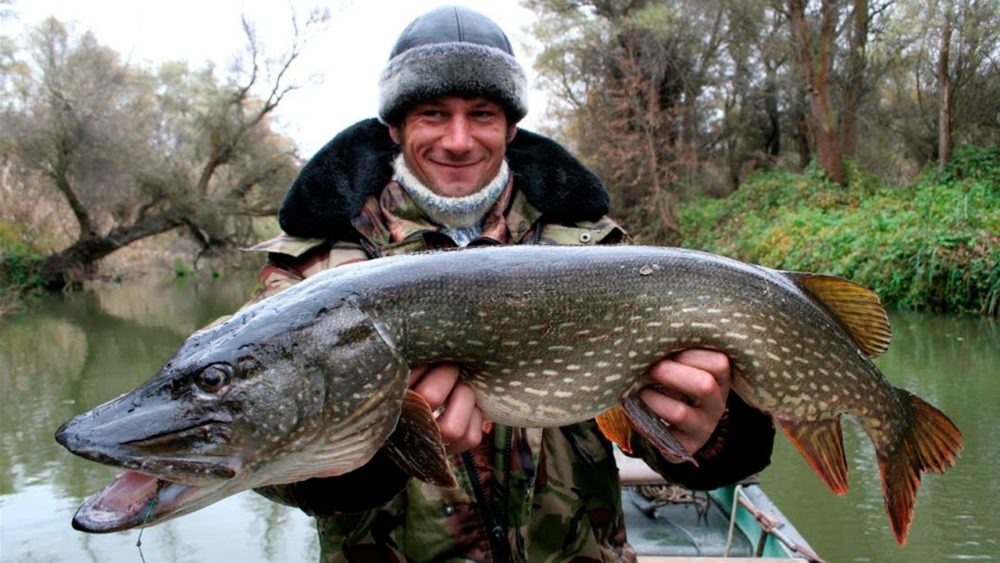
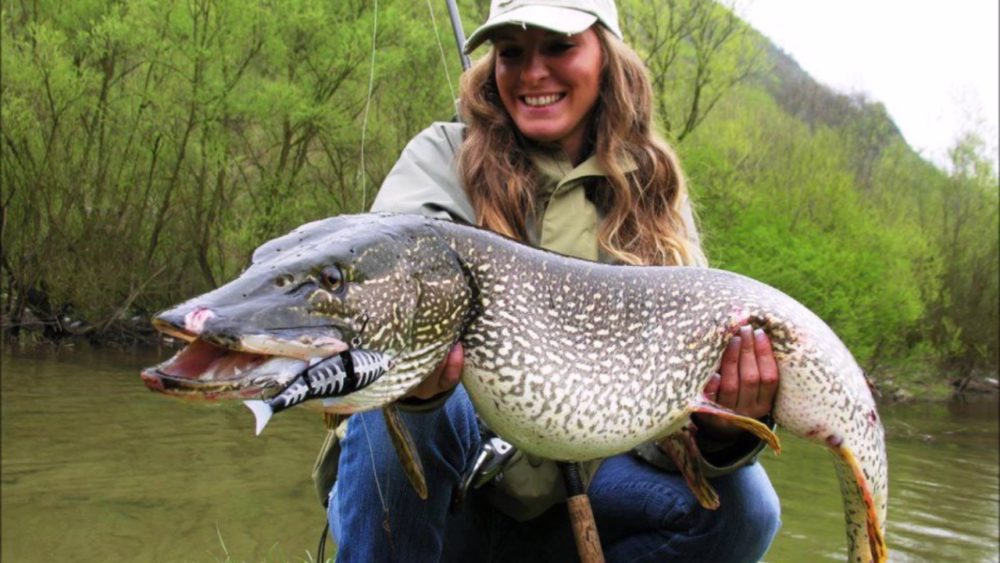
Average weight and size of a pike
In 1930 in Lake Ilmen, a predator 1,9 meters long and weighing 35 kg was caught. This was sensational news, since pike usually grow 1,6 meters and weigh 25 kg.
Now anglers are not as lucky as they used to be. They catch small individuals 50-70 cm and weighing 1,2-3 kg. A catch weighing 3-7 kg is much less common. Many fishermen hunt for pike weighing 14-15 kg all their lives, but they never get it.
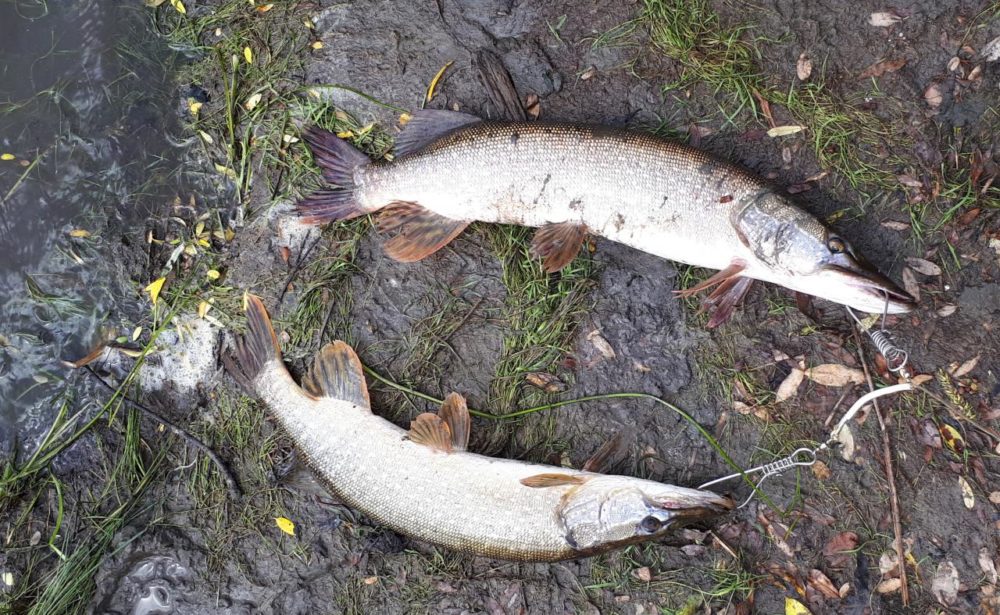
The largest fish live in wild waters, where they have every chance to live to a ripe old age.
It is believed that these predators live for a very long time – more than 100 years. However, this is a myth. In fact, they live an average of 18-20 years. Under excellent conditions and sufficient water supply with air, pikes can live up to 30 years, but more often they die when the oxygen concentration in the water is below 3 mg / l. In most cases, a mass kill of fish occurs in shallow water bodies in winter, when the oxygen saturation of the water drops due to surface icing.
Table: The ratio of age, size and weight of pike
In order to determine the age of a pike by weight and size, you can use the following data:
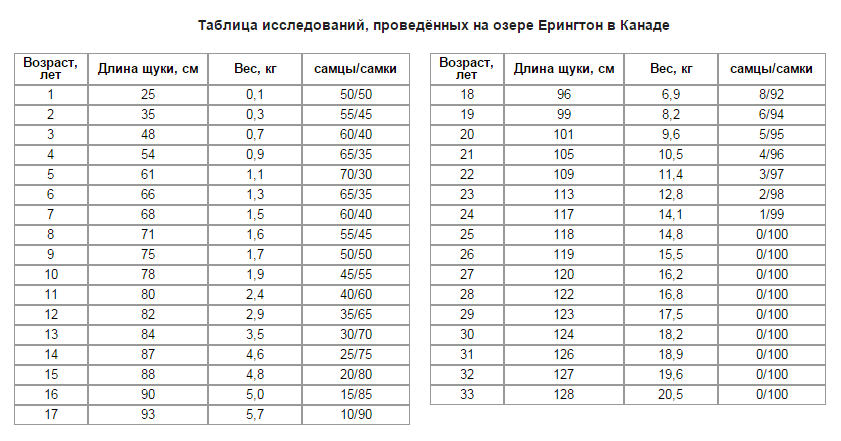
From the table you can find out what mass a spotted predator reaches 50, 60, 80 cm and even 1 m long, or vice versa – determine the age of a pike by length or weight. For example: a meter-long pike weighs an average of 8,5-9,5 kg, and an individual weighing 3 kg lived for about 12 years.
Maximum pike weight
Fishermen compose a huge number of legends, fables and tales about giant fish. According to one such legend, the largest pike was caught in Germany. Its mass was 140 kg, and its length was 5,7 m. However, this story is not supported by any facts.
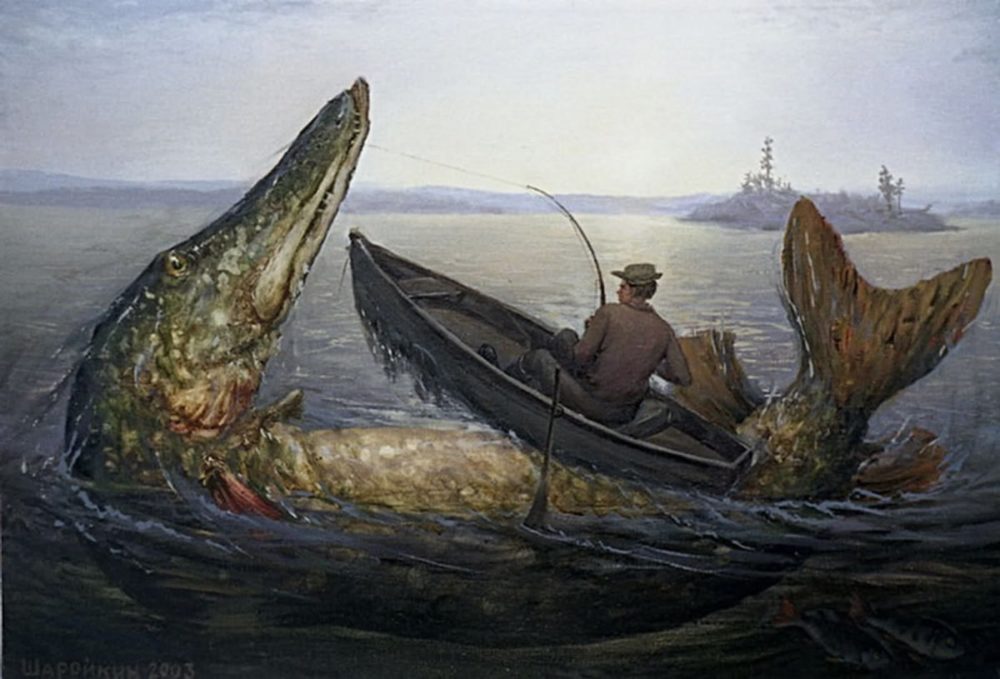
In the world
One cold October day in 1986 in Germany, fisherman Louis Lotaru pulled a huge individual weighing 25 kg from Lake Griffin. At that time it was a record, it was even listed in the Guinness Book. Later, he gave interviews to well-known magazines that were interested in his catch. The angler said that he did not even think that such large pikes could be found in Lake Griffin. She got caught alive. Louis even suffered, pulling his find out of the water – she bit his hands.
Also on the list of the largest fish is pike, caught in Switzerland by fisherman Akom Nilsson. The prey weighed 21 kg. The fish was caught with a lure. The lucky one could not free the predator for a long time, the fight went on for 15 minutes. But the man gathered his strength and the pike gave up.
In December 1990 in Switzerland, an individual weighing 19 kg was caught on live bait. A fisherman caught her on the local Lake Maggiore.
In Russia
The largest individual caught in our country is the record of 1930. The pike was caught in Lake Ilmen. The network has a photo with this fish (see below). Three healthy fishermen hold her in their arms. The predator weighed 35 kg.
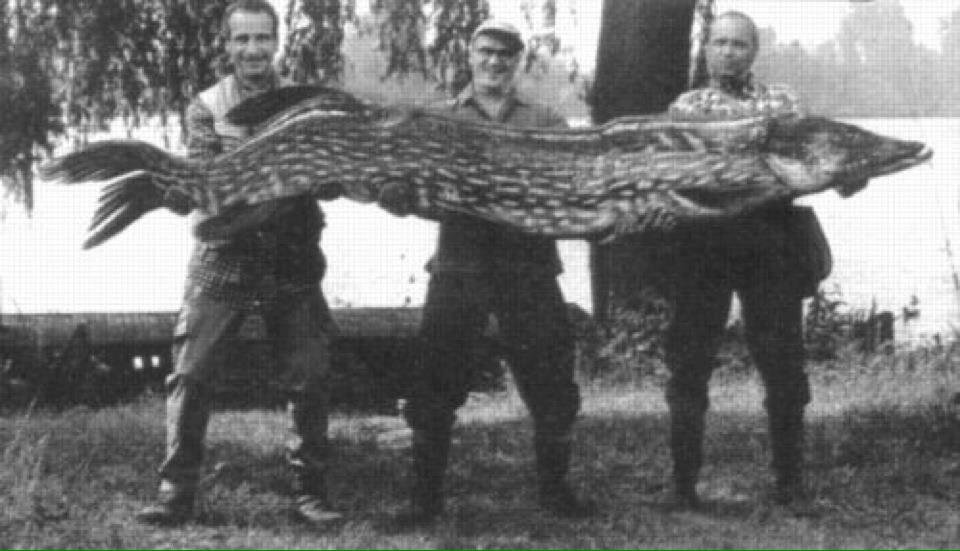
Another Russian record was made by anglers near the town of Sortavala. Such a large catch was accidental, they dragged other fish, but it served as bait for a huge pike. As an involuntary bait, there was also a pike weighing 5 kg. The record predator weighed 49 kg.
However, later, in the north of Russia, another record was set. A man caught a predator weighing 56 kg in Lake Uvildy.
Record weight
The official maximum weight of the largest individual in the world is listed in the Guinness Book of Records. She was caught by an Irish fisherman in a local pond. The weight of the largest pike was 43,5 kg.
Maximum pike size
According to scientists, she can reach the age of over 30 years and weigh about 35 kg.
Maximum pike length
To date, its maximum length reaches one and a half meters.
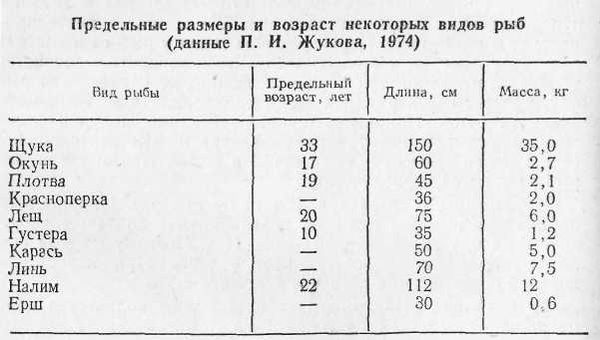
What size pike is allowed to be caught
The size of the individuals allowed to be caught is regulated by the law of the country in which the fishing takes place. The catch is measured from the beginning of the snout to the middle rays of the tail, where the scales end.
What size pike is allowed to be caught in Russia
According to the laws of the Russian Federation of 2019, the allowable catch amount is:
- Pike with severe damage from 25 cm.
- With minimal damage from 35 cm.
Caught pike smaller in size should be released into the pond without fail. When a fisherman is checked by a fishery inspection and violations of the size of the catch are detected, he is threatened with the following sanctions:
- for the first time – a fine of 5000 rubles with confiscation of the catch and all fishing equipment;
- the second time – a fine of up to 300 rubles and the seizure of gear.

If the fisherman breaks the law regularly, then the fishery supervision has every right to apply to the human rights authorities and demand criminal liability for the fisherman.
What size pike is allowed to be caught in Belarus
In the Republic of Belarus, pike fishing is prohibited during the spawning period – from March 1 to April 15 in all regions except Vitebsk. And in the Vitebsk region, you cannot catch this fish from March 9 to April 25. The size of individuals must be at least 35 cm.
You can catch no more than 5 kg of this fish per person per day.
On the territory of Ukraine
The Ukrainian authorities also take care of the replenishment of the biocenosis of water bodies. The law prohibits catching pike in the Black Sea region less than 32 cm, the length of the predator in the Azov region must be at least 35 cm. A younger individual is able to bring numerous offspring, which is why when such a fish gets on a hook, it should be immediately released into the water.
Pike is a unique fish, about which many legends and fairy tales have been invented, associated with its huge size. Unfortunately, giant pikes are extremely rare in the 21st century. But, perhaps someday you will be lucky and you will become the owner of a record trophy.










